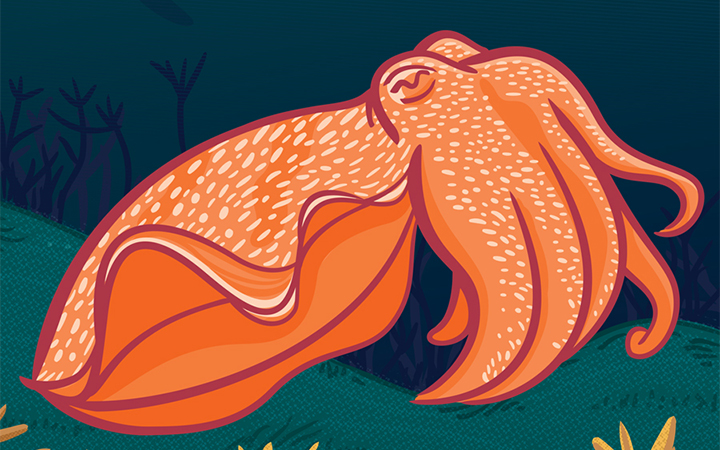Sepia apama, also known as the giant cuttlefish and Australian giant cuttlefish,[2] is the world’s largestcuttlefish species, growing to 50 cm in mantle length and over 10.5 kg (23 lb) in weight.[3] Using cells known as chromatophores, the cuttlefish can put on spectacular displays, changing color in an instant.
S. apama is native to the southern coast of Australia, from Brisbane in Queensland to Shark Bay in Western Australia. It occurs on rocky reefs, seagrass beds, and sand and mud seafloor to a depth of 100 m.[4]
Sepia apama live from two to three years. Breeding takes place with the onset of the southern winter. Males abandon their normal cryptic coloring and set out to dazzle the females by adopting rapidly changing bright colours and striking patterns. Females are polyandrous, and collaborative research indicates the tendency for females to reproduce using male genetic material deposited in spermatangia more favorably than in sperm receptacles directly. Females then attach their eggs to the underside of rocks in caves or crevises where they will hatch within three to five months. Sepia apama are semelparous and death follows shortly after a single mating cycle and laying of eggs that will spawn the next generation.[5] Sepia apama have poor anaerobiccapability compared to most aquatic invertebrates and a lack of food leads to catabolism. Stomach content analysis indicates fasting during the breeding season and as Sepia apama can catabolise no more than 50% of their body weight they slowly lose physical condition as the season progresses and eventually die. Throughout their range, Sepia apama breed in pairs or small groups, laying eggs in suitable caves or rock crevises. Loose spawning aggregations can form but rarely exceed 10 animals in any one location,[6] with one known exception: hundreds of thousands aggregate off Point Lowly in the Upper Spencer Gulf. While surveys suggest that juveniles leave the spawning ground after hatching, nothing is known of their subsequent movement or lifestyle strategies as a juvenile.
(From Wikipedia, June 2015)





